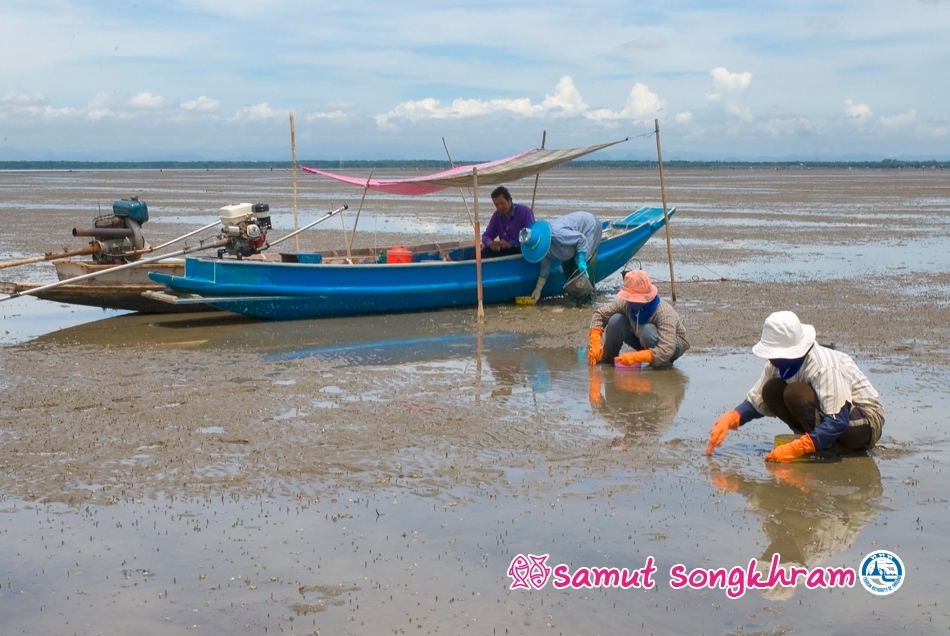
Samut Songkhram province is close to Bangkok but the life of locals is still conservative in many ways. Tourists who love to experience culture and traditional lifestyle, Samut Songkhram travel is where you can see vegetable gardening, making coconut sugar, or visiting Tha Kha floating market.
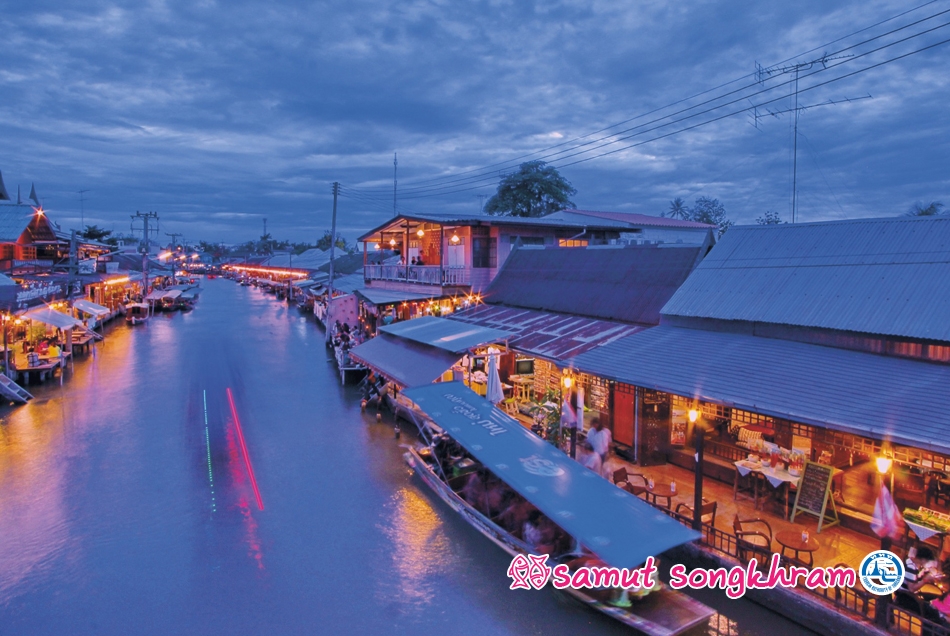
Talat Nam Yam Yen Amphawa is an afternoon floating market by the canal near Wat Amphawan Chetiyaram (parking area is available). On Friday, Saturday and Sunday, during 12.00 a.m. – 8.00 p.m., the Amphawa Canal is occupied by vendors who pack their boats with food and drinks, such as fried sea mussel, noodles, coffee, O-liang (iced black coffee), sweets, etc. There are also things for sale on wheelbarrows on the bank. Visitors can enjoy a cosy atmosphere and music broadcast by the community members, explore the market, have food, and hire a boat to see fireflies at night.
In 2008, the Khlong Amphawa Community was granted an Honourable Mention Award from the UNESCO Asia – Pacific Heritage Awards for Culture Heritage Conservation. This is regarded as a success of public and private cooperation in conserving old buildings of architectural beauty and significance that well reflect local characteristics.
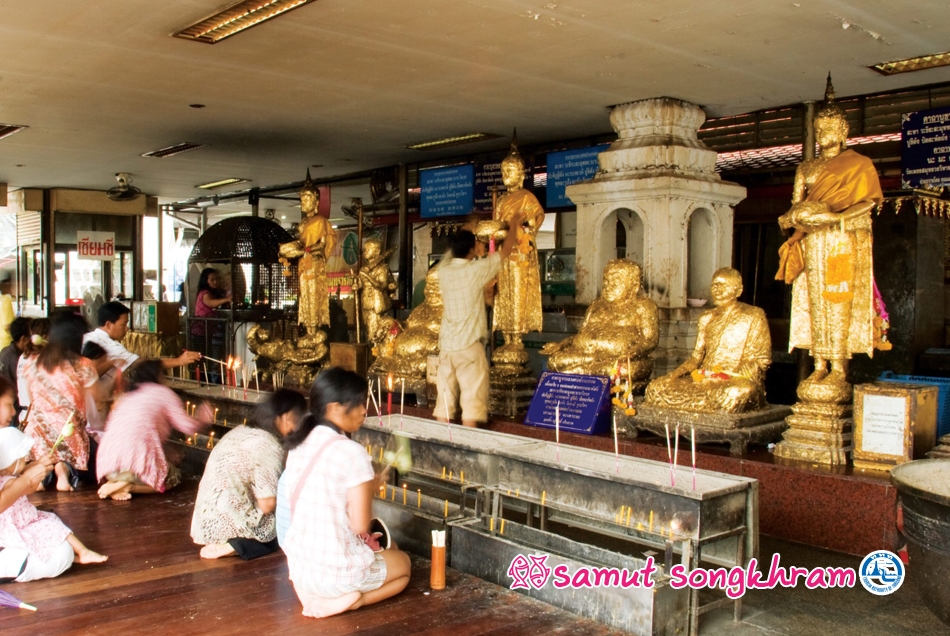
Wat Ban Laem or Wat Phet Samut Worawihan is located in town on Phet Samut Road. This is an important temple of the province. Initially, it was called Wat Si Champa. According to the Chronicles of the royal records, the Burmese led an army to attack the city of Phetchaburi in 1764. At that time, a Thai army from the capital came in time to help protect the city. Villagers of Ban Laem in Phetchaburi fled from the Burmese to resettle in Tambon Mae Klong to the north of Wat Si Champa, and called their village ‘Ban Laem,’ the same name as their former village in Phetchaburi. Later, the villagers helped restore the temple and renamed it ‘Wat Ban Laem.’
Most of the villagers of Ban Laem are fishermen. Once they went fishing in Ao Mae Klong and found two Buddha images in their trawl net. One was a seated image and the other was a standing figure. The seated image was brought to Wat Khao Takhrao in Amphoe Ban Laem, Phetchaburi, while the other was enshrined here in Wat Ban Laem and commonly called ‘Luangpho Ban Laem.’ The standing Buddha image holding an alms bowl is around 167 cm high. (The original alms bowl was lost in the sea. Somdet Chaofa Krom Phraya Phanuphantwongworadet offered a new one of blue glass instead.) Because of its sacredness, the image has gained respect from the villagers. Wat Ban Laem was developed to be a large temple since faithful people continued to make merit and pay homage to the image. Later, it was promoted as a royal temple of the third class and given a new name as ‘Wat Phet Samut Worawihan. Inside the temple compound, there is a Sangha museum with displays of Buddha images, amulets of different periods, ancient artefacts, blue-and-white porcelain, and a pulpit of the Ayutthaya period. Admission is allowed only through contact in advance to the abbot.
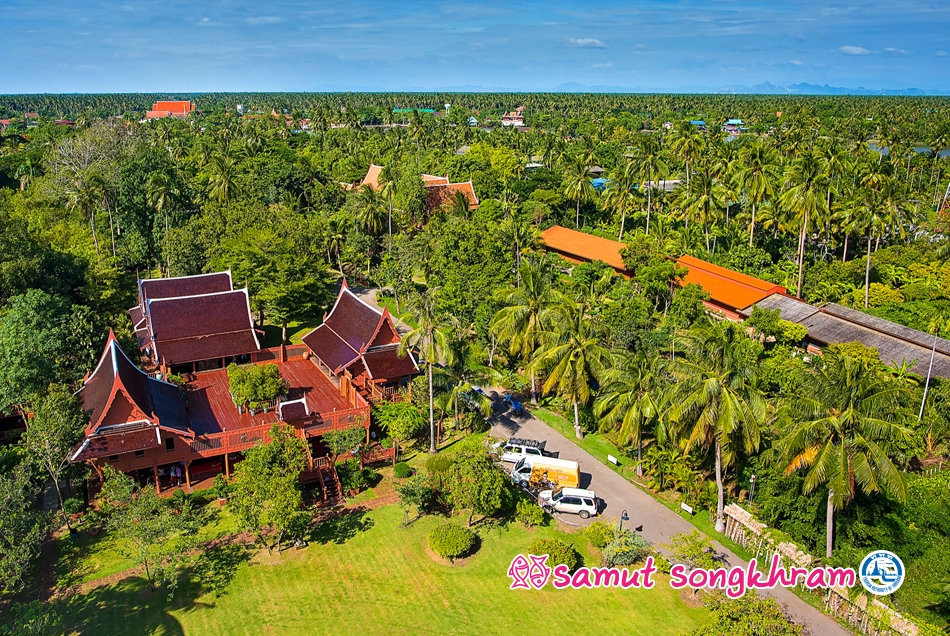
King Rama II Memorial Park is the project to honour King Rama II by the King Rama II Memorial Foundation under Royal Patronage, for the royal graciousness of bestowing exquisite art and culture as a national treasure, which qualified King Rama II to be praised as a Person of the World by UNESCO. The construction site of the Memorial Park, which was given by Phra Ratchasamutmethi, an abbot of Wat Amphawan Chetiyaram, covers an area of around 11 rai. The area is important since it was a birthplace of King Rama II.
Within the King Rama II Memorial Park, there are many interesting spots:
King Rama II Museum is comprised of four Thai-styled buildings separated into sections. The Central Hall houses the statue of King Rama II and displays artefacts from the early Rattanakosin era, such as Bencharong pentachrome porcelain, pottery, Khon masks, etc. The Male Room presents the living quarters of heroic Thai men, with a Buddha image and a bed which is believed to have belonged to King Rama II. The Female Room displays living quarters of Thai women in the past, with a dresser, a mirror, etc. The Veranda imitates that of a traditional Thai house, decorated with pots of dwarfed trees and decorative plants. The Kitchen and Restroom display a Thai kitchen with kitchenware and crockery, and a restroom of the middle class.
In addition, there is an open theatre and a botanical garden where plants in Thai literature have been collected. A shop here offers local products and young plants. The Park is shady with traditional Thai ambience. It is open daily, from 8.30 a.m. – 5.00 p.m. on Monday to Friday, and 8.30 a.m. – 5.30 p.m. on Saturday and Sunday. Admission fee, adults: 20 Baht; children: 5 Baht. For more information, call Tel. 0 3475 1666, 0 3475 1376 Fax: 0 3475 1376.
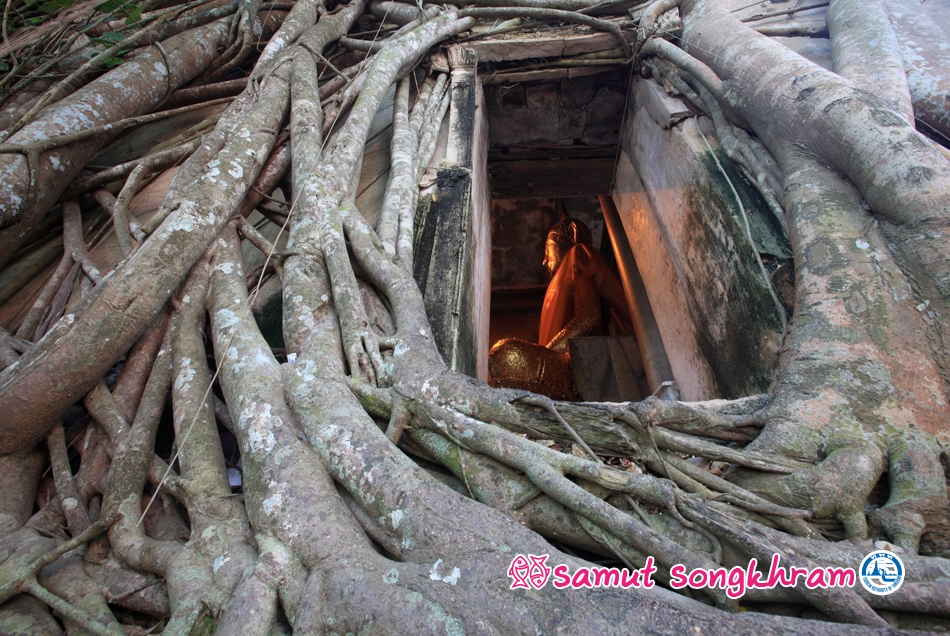
Bang Kung Camp is located at Mu 4, Tambon Bang Kung. When arriving at the camp site, visitors will firstly see an imitation wall built in memory of the battle. Here is a historic navy camp site. Following the second defeat of the Ayutthaya kingdom in 1767, King Taksin the Great moved the naval force to set up camp in the district of Bang Kung since Mueang Mae Klong (the city of Mae Klong) was in the way used by the Burmese army. A wall was built to make Wat Bang Kung be in the middle of the camp as a spirit centre for soldiers.
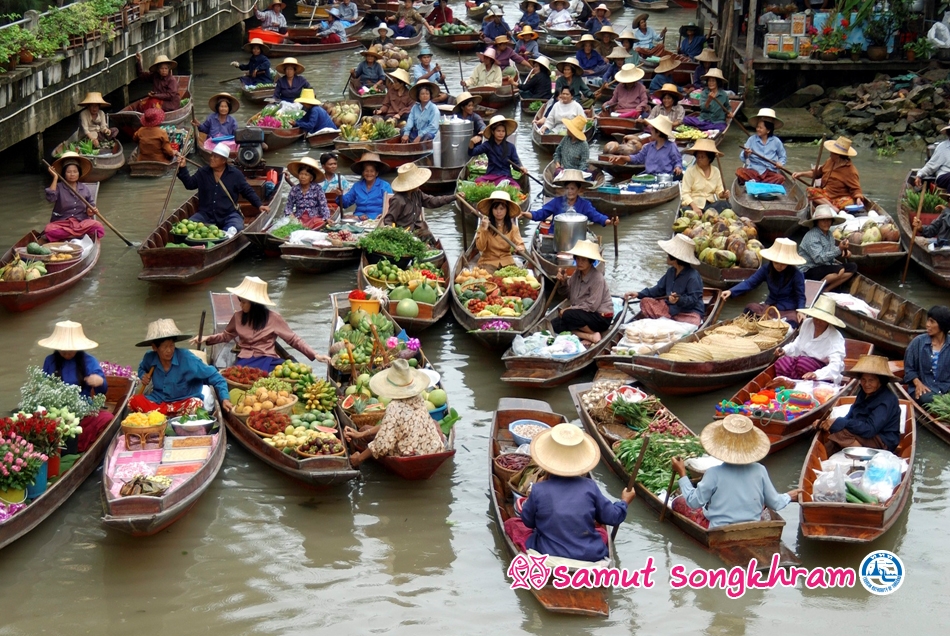
Talat Nam Tha Kha is located in Tambon Tha Kha. This floating market still remains the villagers’ way of life in nature. The villagers here do farming and grow various plants. They usually paddle a boat to bring their produce to sell to each other. The vegetables and fruits from their orchards include chili, shallot, garlic, coconut sugar, guava, coconut, rose apple, pomelo, etc. The market is held every five days on the second, seventh, and twelfth days of the waning or waxing moon in the lunar month from around 8.00 – 11.00 a.m. A boat service is also available for visitors to paddle around the village and fruit orchards.